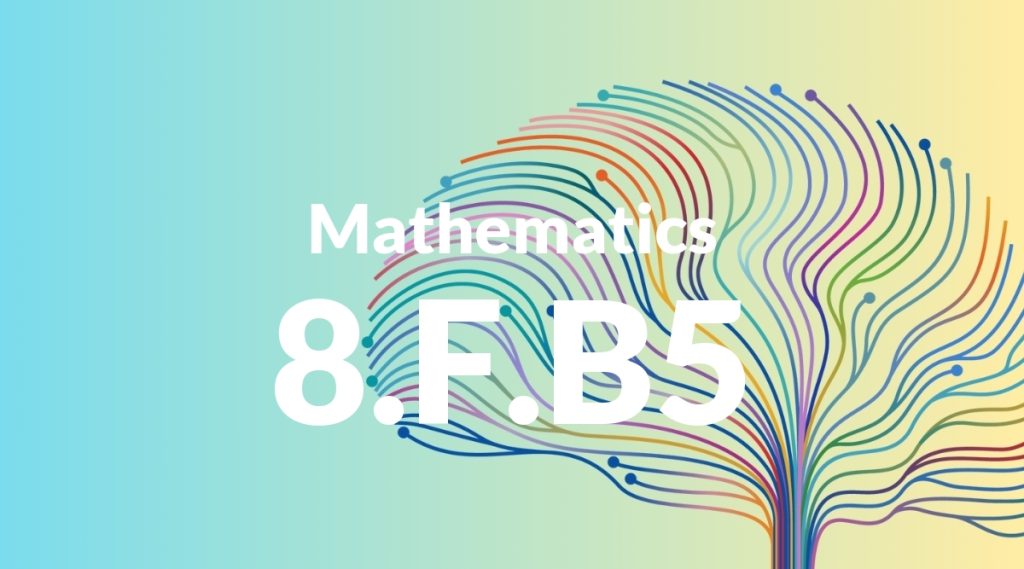Standard: 8.F.B5 – Describe qualitatively the functional relationship between two quantities by analyzing a graph (e.g., where the function is increasing or decreasing, linear or nonlinear). Sketch a graph that exhibits the qualitative features of a function that has been described verbally.
Grade level: Grade 8
Subject: Mathematics
Domain: Functions
Teacher Overview
This standard focuses on helping students understand the qualitative relationship between two quantities by analyzing graphs. It is important because it builds the foundational skills needed for interpreting and creating graphs, which are essential in higher-level mathematics and real-world applications. Students need to have a solid understanding of basic graphing concepts and the idea of a function as a relationship between two quantities.
Mastering this standard will prepare students to work with more complex functions, including quadratic and exponential functions. They will also be able to interpret and create graphs for various types of functions, which is essential for higher-level mathematics and many real-world applications.
Common Misconception 1
Some students may believe that all functions must be linear. This misconception arises because linear functions are often the first type of function students learn about, leading them to generalize this property to all functions.
Intervention 1
Introduce students to a variety of function types, such as quadratic and exponential functions, through hands-on activities and graphing software. Show them how these functions differ from linear functions in their graphs and real-world applications.
Common Misconception 2
Another common misconception is that the graph of a function must always pass through the origin. This misunderstanding can occur because students often see examples of functions that do pass through the origin.
Intervention 2
Provide examples of functions with different y-intercepts and explain how the y-intercept represents the function’s value when x is zero. Use real-world examples to illustrate this concept.
Prerequisite Knowledge
Students should understand basic graphing concepts, including the x and y axes, plotting points, and interpreting simple linear graphs. They should also be familiar with the concept of a function as a relationship between two quantities.
Subsequent Knowledge
After mastering this standard, students will be able to apply their understanding of functions to more complex scenarios, including interpreting and creating graphs for quadratic and exponential functions. They will also be prepared to explore the concept of function transformations.
Instructional Activities
- Graphing different types of functions using graphing software
- Analyzing real-world data sets and creating corresponding graphs
- Sketching graphs based on verbal descriptions of functional relationships
- Group activities to identify and correct common misconceptions
- Interactive lessons on the differences between linear and nonlinear functions




